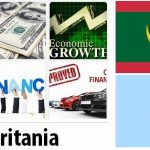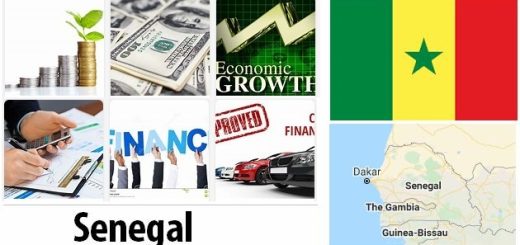Malawi Economy Facts
Economical overview
Malawi’s economy is based on agriculture, which accounts for 85 percent of export earnings. Dependence on agriculture makes the country sensitive to weather conditions and declining world market prices for the country’s export goods.
Malawi’s by far the most important export crop is tobacco, followed by tea and sugar. Rice, cotton, rubber and peanuts are also important for export. Export crops are grown mainly on plantations, while about 85 percent of Malawians are small farmers who primarily grow food for their own households.
- Countryaah.com: Major imports by Malawi, covering a full list of top products imported by the country and trade value for each product category.
Agriculture is plagued with problems. Tobacco demand is declining and Malawi’s rapid population growth is increasing the pressure on the land that is used too intensively. Fields are depleted and harvests are reduced.
The government hopes to reduce dependence on agricultural exports by developing several sources of income, mainly mining and tourism. Malawi has never recovered minerals or rocks on any major scale, but the mining industry is considered to have great potential. Tourism is small but growing.
The country’s industrial sector is small and undeveloped as is the service sector. The industry is concentrated in Malawi’s southern part and the city of Blantyre. The factories mainly produce goods for domestic consumption, including food, building materials, clothing and shoes.
- Abbreviationfinder.org: Check this abbreviation website to find three letter ISO codes for all countries in the world, including MWI which represents the country of Malawi. Check findjobdescriptions to learn more about Malawi.
In the wake of the global financial crisis that was triggered in 2008, Malawi experienced an acute shortage of foreign currency, leading to fuel shortages and protests. The problems were exacerbated when the outside world withdrew their aid (see Modern History). By 2012, the economy had reached a crisis level and growth was down to just under 2 percent.
Growth recovered to 5.7 percent in 2014, mainly due to good rains and better harvests. A contributing factor was that the currency, kwacha, was devalued and that the income from tobacco exports thus increased.
At the beginning of 2015, the rains were so intense that agricultural land was flooded, which in turn was expected to inhibit growth.
FACTS – FINANCE
GDP per person
US $ 389 (2018)
Total GDP
US $ 7,065 million (2018)
GDP growth
3.5 percent (2018)
Agriculture’s share of GDP
26.1 percent (2017)
Manufacturing industry’s share of GDP
9.4 percent (2017)
The service sector’s share of GDP
52.4 percent (2017)
Inflation
8.8 percent (2019)
Government debt’s share of GDP
62.9 percent (2018)
External debt
US $ 2,160 million (2017)
Currency
Kwacha
Assistance per person
US $ 81 (2017)
2009
June
Ministerial posts to the president’s brother
President Mutharika appoints his brother Peter Mutharika as Minister of Justice to later make him Minister of Education.
May
Mutharika re-elected president
President Mutharika is re-elected for a second term with almost 66 percent of the vote. Challenger John Tembo, backed by Mutharika’s rival Muluzi, gets just under 37 percent.
In the parliamentary elections, held simultaneously, President Mutharika’s party wins the DPP’s own majority with 113 of the 193 seats. Tembo’s party MCP more than halved to 27 seats, and Muluzi’s party UDF reduces even more to 17 seats. Several of the 33 independent candidates who come into Parliament promise to support the victorious DPP, who may also receive defectors from the MCP.
February
Ex-President Muluzi seized
Bakili Muluzi is arrested, accused of corruption and embezzlement of aid during his time as president.













